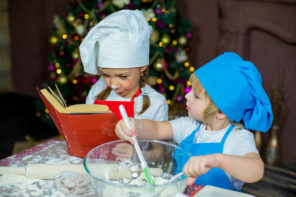Every art form goes through a “Golden Age,” a period when the art is at its peak and relevant to a wide audience. Juvenile literature has a rich history of beautiful books that have touched generations of children. Timeless works by authors like Roald Dahl, Maurice Sendak and Beverly Cleary have delighted and inspired generations of children.
With respect and admiration for past authors, I contend that now—today—is the golden age of juvenile literature. Never before have written works for children been produced at the volume, consistency and quality than what is in print today. The body of juvenile literature released just in the past five years demonstrates that we’re in a unique moment in this art form we call children’s books.
Please take a tour of today’s juvenile literature with me to discover a level of creativity, inclusiveness and relevancy that defines this Golden Age.
New Fantasy
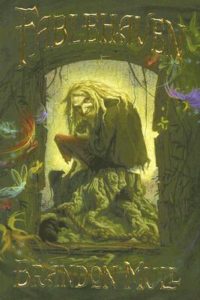 Today’s fantasy writers take cues from classic fairytales to forge new stories and characters that are a feast for the imagination. Modern characters in these books deal with issues familiar to their readers; difficult family situations, bullying, emotional issues and more. Placing “normal” kids in fantasy scenarios include readers into the stories in new and exciting ways.
Today’s fantasy writers take cues from classic fairytales to forge new stories and characters that are a feast for the imagination. Modern characters in these books deal with issues familiar to their readers; difficult family situations, bullying, emotional issues and more. Placing “normal” kids in fantasy scenarios include readers into the stories in new and exciting ways.
- The Fablehaven series by Brandon Mull tells the story of a brother and sister who live with their grandparents on a reserve for fairy tale characters. The adventures within the series have become a staple for middle school readers.
- The classic Brothers Grimm stories and other fairy tales receive a modern treatment in The Land of Stories series by Chris Colfer. These stories blend classic characters and add new ones to recreate and enlarge what we know as fairy tales.
- The definition of a fantasy character is being redefined. A Monster Calls by Patrick Ness does not meet established ideas about fantasy. The Monster in the story can be interpreted in many ways as a young boy struggles with the illness and death of his mother and an absent father. The story draws us out of our reality to deal with heartbreaking emotions and a quest for truth.
Historical Fiction
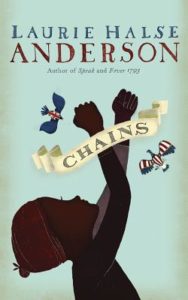 This is a genre that has a well-earned reputation for drab and predictable books. However, the hallmark of today’s historical fiction is a nuanced approach to historical events and deeply personal stories of realistic characters, breathing new life into this classic genre.
This is a genre that has a well-earned reputation for drab and predictable books. However, the hallmark of today’s historical fiction is a nuanced approach to historical events and deeply personal stories of realistic characters, breathing new life into this classic genre.
- Chains by Laurie Hales-Anderson is a well-researched the story of sibling slaves in Revolutionary New York, one of whom becomes a spy for the Patriots. The treatment of slavery in the time period is told in a gripping story.
- The Book Thief by Markus Zusak, is a beautiful treatment of loss, hardship and hope among children in Nazi Germany. The story has become a feature film—but, the book is better.
- Heart of a Samurai by Margi Preus tells the true story of one of the first-known Japanese visitors to the United States. 14-year-old Manjiro Nakahama is shipwrecked and picked up by an American whaling vessel. His story of travel and return to Japan is both true and captivating.
Illustrated books
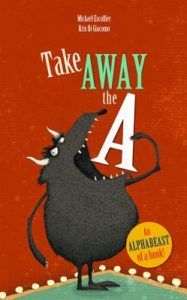 Art has always been integral to juvenile literature. It’s tempting to think that in our digital world, there would be little space for beautifully printed illustration—nothing can be farther from the truth. There is a wealth of immersive art in new books that cannot be done justice on a flickering screen.
Art has always been integral to juvenile literature. It’s tempting to think that in our digital world, there would be little space for beautifully printed illustration—nothing can be farther from the truth. There is a wealth of immersive art in new books that cannot be done justice on a flickering screen.
- Take Away the A by Michael Escoffier is an innovative take on the alphabet book. Each painting is beautifully rendered and the text will keep it at the top of the stack for pre-school readers.
- Flotsam by David Wiesner is a 2007 winner of the Caldecott Medal. The story within the art connects generations, speaks to modern kids and can be interpreted myriad ways—all without words.
- Float by Daniel Miyares tells the story of a boy’s adventures on a rainy day. The colors and story set a palpable mood, inviting a young reader to explore each page again and again.
Graphic Novels
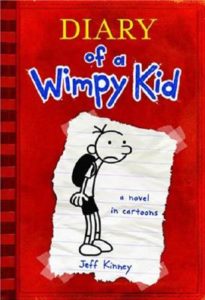 The term “graphic novel” may have a bad connotation for some parents, but today’s graphic novels are well-rendered and have turned untold numbers of children from reluctant to active readers with engaging and well-crafted stories.
The term “graphic novel” may have a bad connotation for some parents, but today’s graphic novels are well-rendered and have turned untold numbers of children from reluctant to active readers with engaging and well-crafted stories.
- Nobody can deny the success of graphic series like Diary of a Wimpy Kid and Big Nate. These books opened the door to new ways of combining illustration and text to tell a story.
- Frank Einstein by Jon Scieszka, illustrated by Brian Biggs follows the adventures of a boy, a smart robot and a clumsy robot. The series is thoroughly entertaining while it touches math and mechanical principles. Although Frank Einstein may not be a pure graphic novel, it demonstrates a compelling new way to combine art and words.
- The Baby-Sitters Club series has received a thoughtful update by author/illustrator Raina Telgemeier. The familiar stories of characters adults today grew up with are retold with a quality graphic treatment.
Emergent Readers
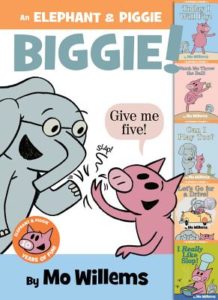 The first step into independent reading is a big moment for any child. Until recently, the offerings for this area have suffered from flat stories that feel like homework. Not so anymore. Today’s emergent readers have access to titles that they actually want to read.
The first step into independent reading is a big moment for any child. Until recently, the offerings for this area have suffered from flat stories that feel like homework. Not so anymore. Today’s emergent readers have access to titles that they actually want to read.
- The Elephant and Piggie series by Mo Willems are fun and interesting stories that usefully combine illustration and text to build reading skills.
- National Geographic has developed an excellent series for emergent readers. These books are always among the most read, and worn out, in classrooms and libraries.
- For older emergent readers, the Ivy and Bean series by Annie Barrows follows the adventures of two friends who meet the challenges of growing up with humor and heart.
Inclusive Characters
Juvenile literature has suffered from being monolithic in its approach to characters. Today’s books include characters of all colors, genders and abilities in prominent roles. It’s easier than ever for children from all walks of life to find characters who look like them.
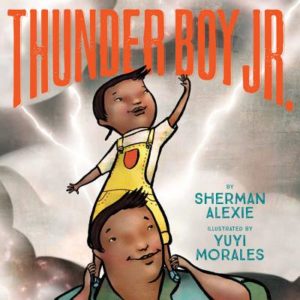
- Thunder Boy Jr. by Sherman Alexie, illustrated by Yuyi Morales tells a relatable story of a boy named after his father, but seeking his own identity. Even if a reader does not pick up on the Native American cultural significance, the story and illustration will make the book a favorite.
- Over the Ocean by Taro Gomi relates the wishes of a young girl who is curious about the cities, skyscrapers and people on the other side of the horizon. She wonders if there is a girl like her looking back.
- One Crazy Summer by Rita Williams-Garcia tells the story of three sisters who travel to Oakland, Calif. to meet their mother in 1968. The story is told through the lens of the Civil Rights Movement and has many well-earned awards.
- Wonder by R.J. Palacio is an undeniable instant classic. Soon to be a feature film, the book approaches the topic of looking different in a heartwarming and honest way.
Positive Female Characters
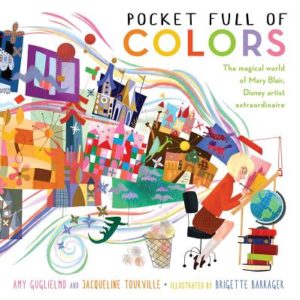 Unlike the past, today’s girls are met with a wealth of books depicting girls and women in positive and leading roles. Books range from fun reads to more serious stories about positive female role models from the past.
Unlike the past, today’s girls are met with a wealth of books depicting girls and women in positive and leading roles. Books range from fun reads to more serious stories about positive female role models from the past.
- Pocket Full of Colors by Amy Guglielmo and Jacqueline Tourville recounts the career of Disney illustrator Mary Blair. Blair used vibrant and modern color schemes that helped shape the Disney we know today. She overcame gender bias with creativity and persistence.
- The Princess in Black series by Shannon Hale is a fun read for budding readers. The princess solves problems, creates others and has fun and friendship along the way. This series shows confident and proactive girls working together.
- Goodbye Stranger by Rebecca Stead follows the changing relationships and challenges of three girls entering seventh-grade. The book tactfully addresses appropriate use of social media—and its dangers. The result is friendship and understanding among the girls who remain loyal to one another as their lives move toward different interests.
The books listed are but a sliver of the immense number of books available today. Each category listed above has dozens of quality titles for children to read and explore.
I hope this short tour demonstrates that today truly is a golden age of juvenile literature. The good news is that there is no sign of it slowing down. Authors and publishers are working harder than ever to develop and publish quality content. Juvenile literature has a rich history that paved the way for today’s writers and illustrators. I’m confident that an even brighter future lies ahead. This golden age is set to last a long time. Just keep reading!
Jake Ball is the owner of Children’s Bookstore.



